
By Dean Larson
Illustrations by Jeff Lane
Whether you’re planning out your next chassis build or perusing the options list for your next buy, it’s critical that you choose the right rear suspension system. All too often, rear suspension isn’t given the same diligence as the front when it is of equal importance for the vehicle’s ride and handling. To be a full-fledged rear suspension expert, you’ll need a semester or two of lessons in chassis dynamics, but to get your feet wet, here’s a crash course in basic rear suspension setups.
Leaf-spring solid axle
As old as dirt, but tried-and-true, the leaf-spring rear axle is the most common suspension on the road for rear-wheel-drive vehicles. In its most primitive form the leaf spring actually predates the automobile altogether, as it was originally used in horse-drawn carriages. The leaf-spring axle is still in use today thanks to its versatility and simplicity.
The simplicity of the leaf-spring axle comes from the leaf springs pulling double duty. In addition to keeping the vehicle’s weight suspended, the leaf springs also serve to keep the axle centered under the vehicle. Leaf springs are clamped to the solid axle, making them versatile and easy to service. Shock absorbers attached to the axle dampen the movement of the leaf springs. Without shocks, the leaf springs would compress and decompress at an uncontrollable rate. Another important piece of the leaf-spring suspension is the shackle. While one end of the leaf spring is attached directly to the chassis, the other end has a shackle in between. The shackle pivots on both ends and ensures the leaf spring functions smoothly and is allowed to change in length as it flexes.
The leaf-spring suspension provides many advantages for a DIY guy. In terms of simplicity, the leaf spring provides two functions in one easily serviceable component. The leaf spring is also cheap to replace and upgrade, thanks to its archaic nature, and parts can be easily changed to dial in performance.
However, this setup does have a few disadvantages in high-performance applications. Under heavy acceleration, torque and traction can overcome the strength of the leaf springs and twist the axle underneath the vehicle. This not only changes the pinion angle and stresses components, but also causes axle hop, which will totally invalidate a sweet burnout. Another disadvantage of the leaf spring comes into play under hard cornering. Designed primarily for vertical loads, the leaf spring is known to flex within bushings and mechanical joints, allowing side-to-side movement of the axle.
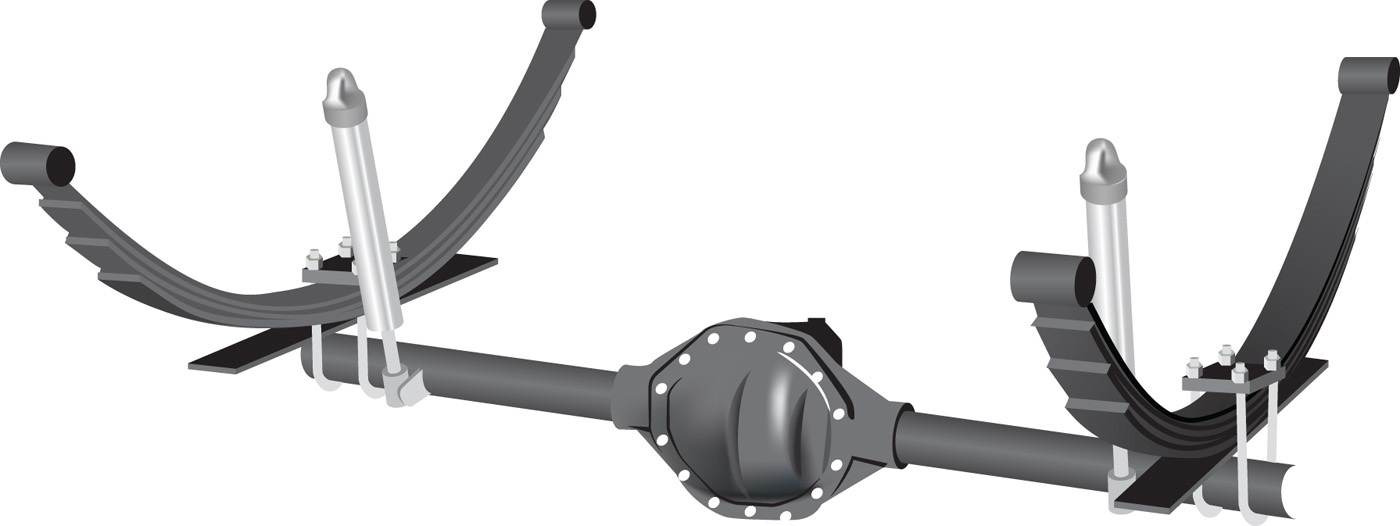
Four-link solid axle
The four-link system is designed to combat the disadvantages of leaf-spring suspension while retaining a solid axle. It’s a great choice for improved performance over a leaf spring, and there are plenty of four-link kits on the market for a variety of applications.
The four-link setup starts by replacing the leaf spring with a coil spring. A coil spring can provide the same weight-suspending characteristics as the leaf spring, and can do so with less vertical space, weight and friction. However, a coil spring is not able to position the axle under the vehicle like a leaf spring can. There are two main types of four-link rear suspensions, each using four links for positioning the axle, but with a different solution for keeping the axle centered under the vehicle.
The parallel four-link suspension uses four parallel bars with movable joints on each end to keep the axle in position. The lower two links on each side keep the axle from moving front to back, while the upper two links control axle rotation, maintaining a constant pinion angle. To keep the axle centered right to left, a Panhard bar, or track bar, is used. This bar has one end mounted to the vehicle and the other to the axle housing using two movable joints. It’s important that the Panhard bar is horizontal when the vehicle is at ride height, as an angled bar would cause right-to-left movement during suspension travel. The downsides of the parallel link setup include possible interference with exhaust systems and side-to-side movement at suspension travel extremes from the Panhard bar.
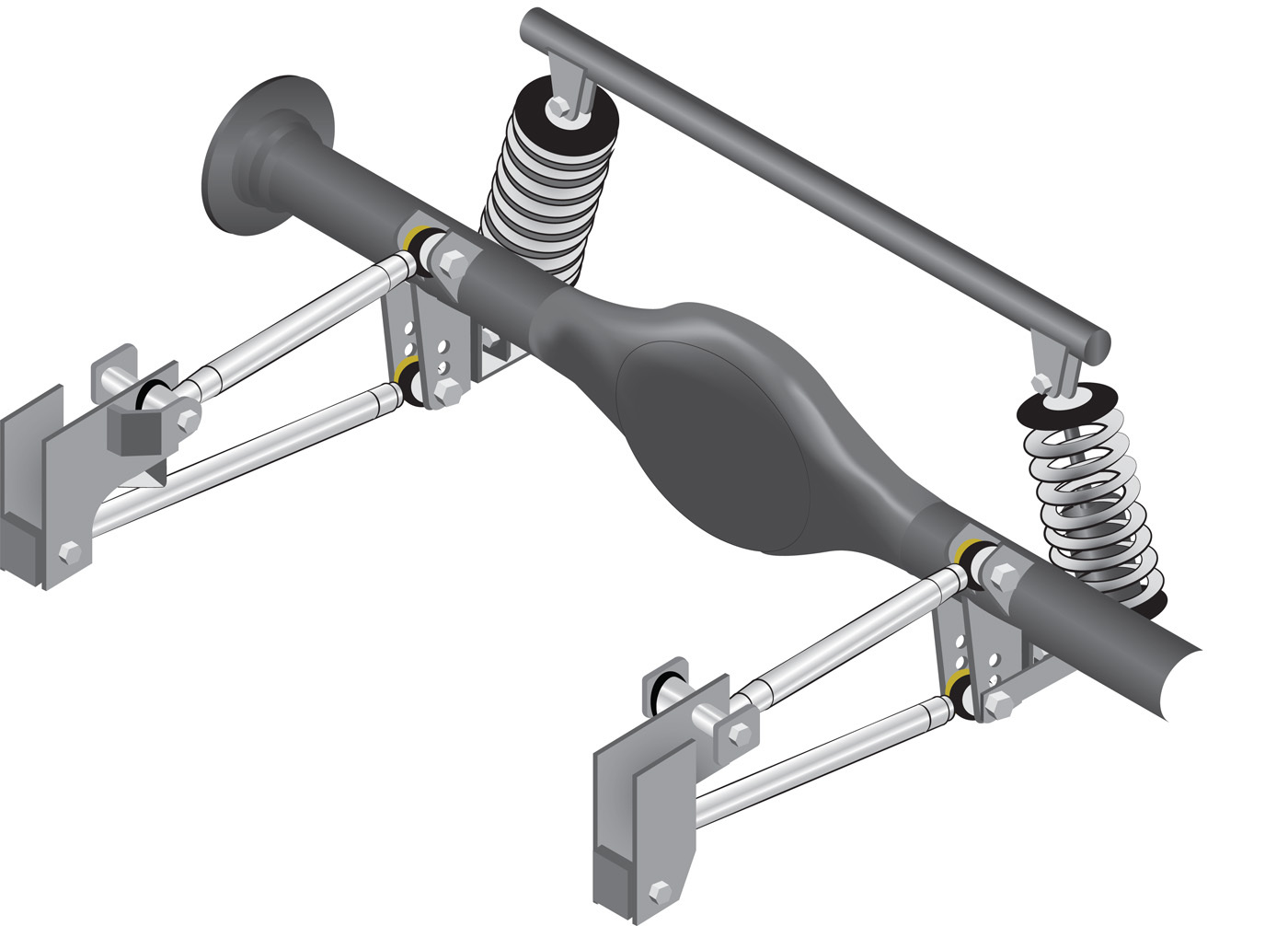
The second type of four-link suspension, the triangulated four-link, does away with the Panhard bar. While the lower links work the same as in the parallel four-link, the upper links have been positioned on an angle. The triangulation of the axle, top and bottom links allows the upper links to keep the axle centered, even at suspension extremes, and control axle rotation. Advantages of the triangulated four-link are fewer parts to mount and potentially more clearance without the Panhard bar. However, triangulated links can be more time-consuming when designing, locating and fabricating mounts.
One downside to the four-link suspension that is still debated is roll bind. To keep it simple, roll bind is a resistance to motion that occurs when a three-dimensional force (like body roll) is applied to a mechanism designed for two-dimensional motion (like suspension links). Some argue it’s only the parallel four-link that is subject to roll bind, and others argue all four-links bind. The debate goes deeper than the focus of this suspension overview, but if you’re building a four-link, roll bind should be on your radar.
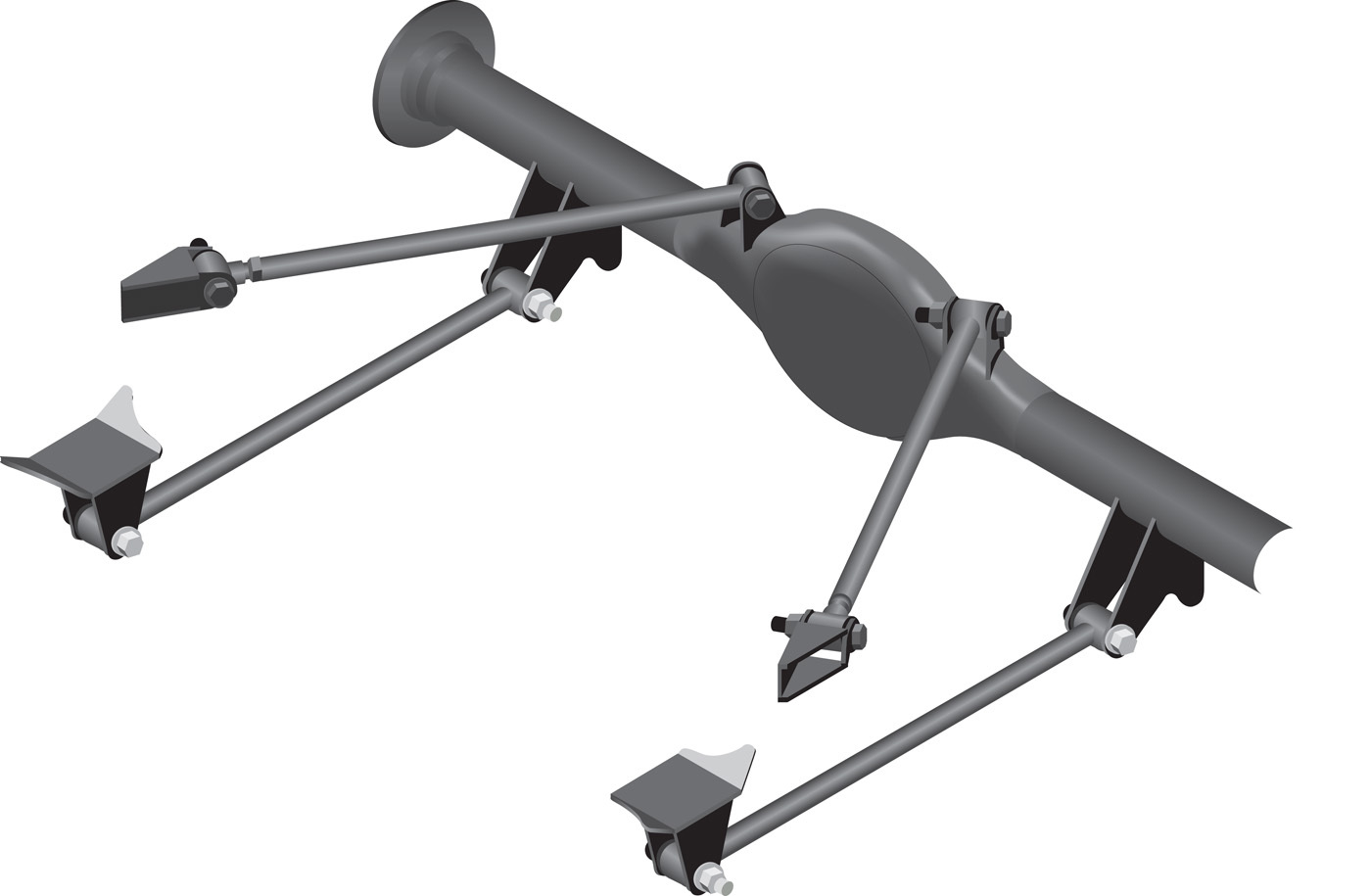
Three-link solid axle
The three-link rear suspension has been used with great success on the track, but is a relatively new setup for street cars. A three-link setup retains the solid axle and lower links of the four-link system, but uses a single upper link to control axle rotation and maintain the pinion angle. This third link is attached to the center of the axle housing on top of the differential, with the other end mounted to the body or chassis. Like the parallel four-link, the three-link requires a Panhard bar to keep the axle centered.
The main advantage of a three-link rear suspension is that it produces virtually no roll bind. The three-link is also relatively simple and is considered to be the best all-around choice for those who want to “set it and forget it,” as it allows hard launches and bind-free cornering. Like other suspension setups, the three-link does have downsides. Because the three-link is less common than the four-link, you might find few or no off-the-shelf setups for your ride. The third link on top of the axle housing also creates difficulties. There is often not enough space between the axle and the vehicle’s floor for a well-designed third link, and some serious torching may be the only solution.
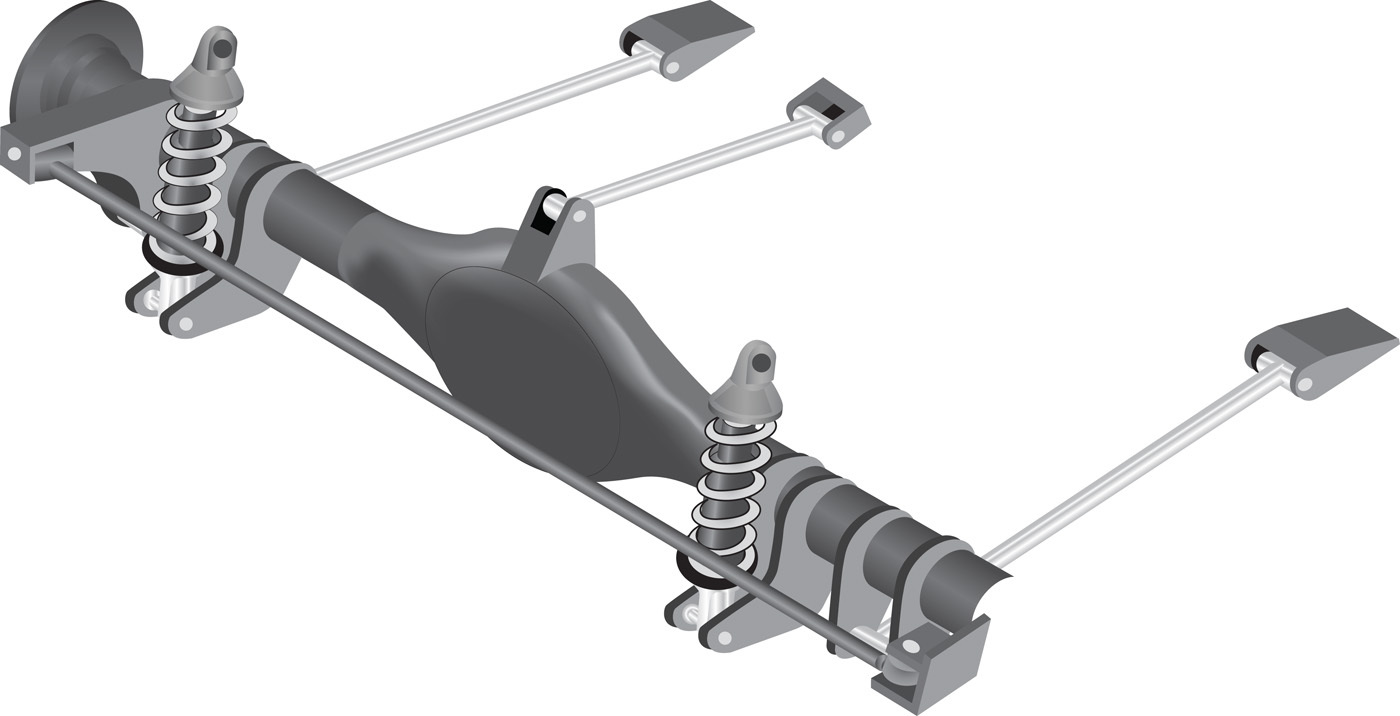
Independent rear
The leaf-spring, four-link and three-link suspension systems are all different takes on solid-axle performance. The solid, or live, axle has proven itself to be strong and simple, and can be your best bet in places like the drag strip. However, if hard launches, insane horsepower and simplicity are not as important in your application as cornering and ride quality, you might want to consider an independent rear suspension (IRS) setup.
Like an average front suspension, an IRS system has an upper and lower control arm on each side paired with a coil spring and shock, allowing each rear wheel to move independently. An IRS setup does away with the bulky solid axle in favor of a differential and axle shafts, decreasing unsprung weight. This can be an advantage for the IRS system because the solid axle is a large amount of unsprung mass.
In an IRS system, the left wheel does not necessarily “feel” what the right wheel does. For example, a pothole hit by the left wheel will not disturb the right wheel’s traction, as it might with a solid axle. An IRS setup is also the most adjustable, allowing fine adjustments in camber, caster and toe, and even ride height with the addition of adjustable coilovers.
Predictably, an independent rear suspension can be very costly and difficult to install, especially when replacing a solid axle. The solid axle can also take much more abuse than the axle shafts and differential of the IRS thanks to the solid axle’s rigid housing.
Choosing a rear suspension setup for your next project car is very much a matter of give and take. Each suspension setup has pros and cons including, but not limited to, ride quality, weight and your pocketbook (if that’s still a relevant term). Most importantly, the rear suspension you choose must work with the rest of the vehicle and be tailored to the kind of driving you have in mind.
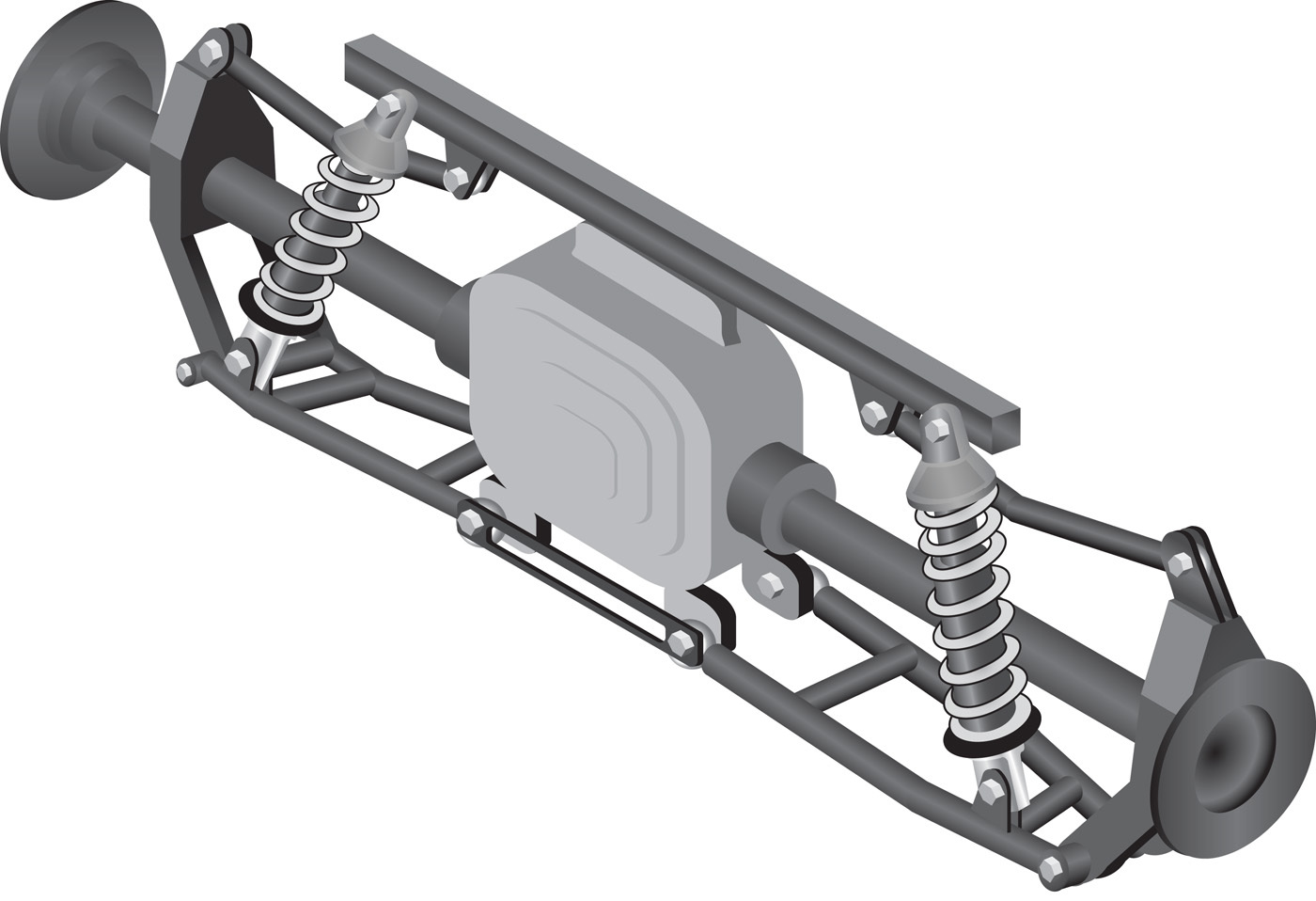

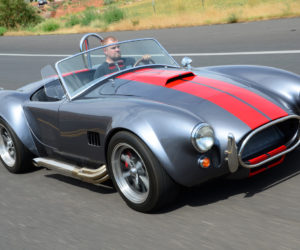
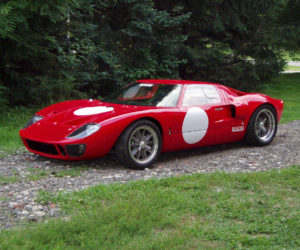
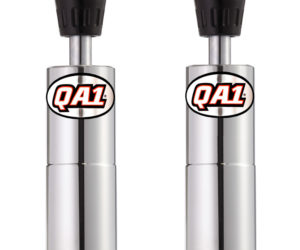
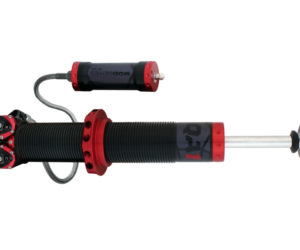
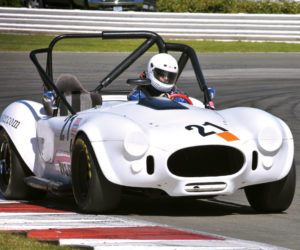
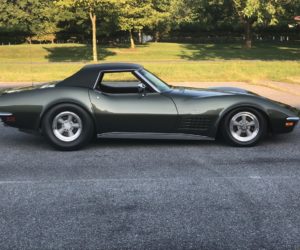




Comments for: Rear Suspension Setups 101
comments powered by Disqus